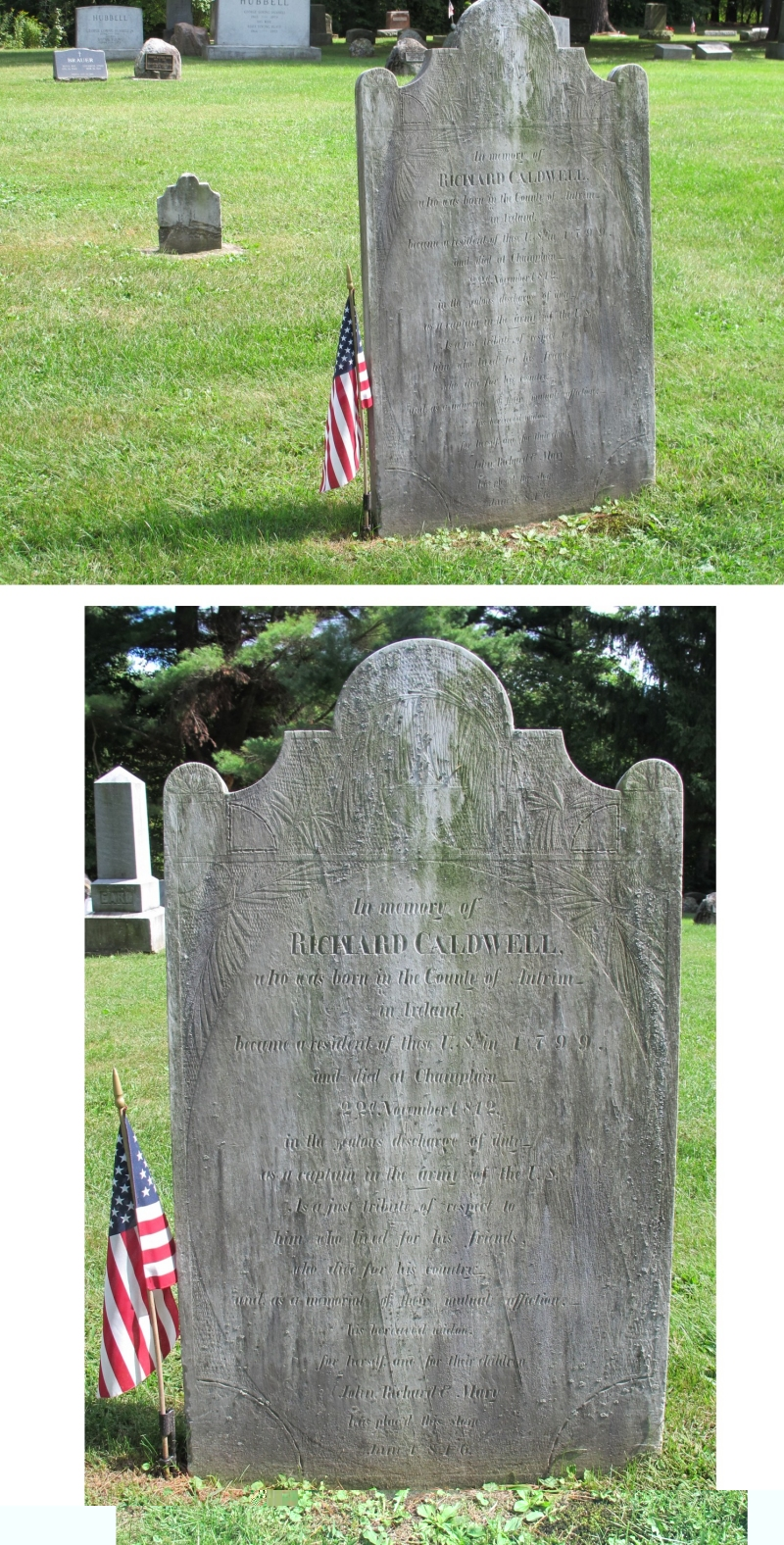Captain Richard Caldwell arrived from Plattsburgh with Gen. Wilkinson's troops in November of 1812. He was sick and delirious and was cared for at John Thurber's house on top of the hill on Prospect Street. Caldwell, like many of the troops, had typhus which is spread by infected lice. He died but a second soldier being cared for in the house lived. Unfortunately, John Thurber and neighboors Deacon Newell and his daughter Ruby would come down with the disease within a few weeks and all die. Many other Champlainers died of this disease.
Caldwell was buried in the Old Burying Yard on Oak Street. His brother corresponded with Pliny Moore aftewards and learned how he died and where he was buried. The brother also wanted to place a nice marker at his grave. A small stone (background) with the initials "R.C." was placed over Caldwell's grave soon after his death by an unknown person. A second marker was placed here in 1816 by Caldwell's family. In 1873, the people buried in the old burying yard were moved to Glenwood Cemetery.
Hugh McLellan copied the inscription on the stone on August 10, 1918.
In memory of
RICHARD CALDWELL,
Who was born in the County of Antrim —
in Ireland,
became a resident of these U.S. in 1799,
and died in Champlain —
22d November 1812,
in the zealous discharge of duty —
as a captain in the army of the U.S.
As a just tribute of respect to
him who lived for his friends,
who died for his country,
and, as a memorial of their mutual affection,
his bereaved widow,
for herself, and for their children
(John, Richard and Mary)
has placed this stone
June 1816
RICHARD CALDWELL,
Who was born in the County of Antrim —
in Ireland,
became a resident of these U.S. in 1799,
and died in Champlain —
22d November 1812,
in the zealous discharge of duty —
as a captain in the army of the U.S.
As a just tribute of respect to
him who lived for his friends,
who died for his country,
and, as a memorial of their mutual affection,
his bereaved widow,
for herself, and for their children
(John, Richard and Mary)
has placed this stone
June 1816
